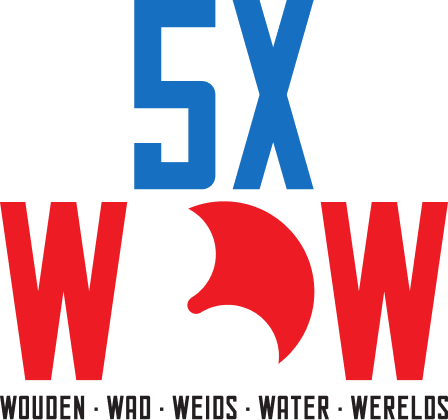Curious about the Woods in the region of Noardlike Fryske Walden?
The Wouden are characterized by small parcels of land bordered by hedgerows, alder rows, trees, and bushes. The land was shielded by digging ditches. The soil left over was used to create a bank on which oak or alder trees were planted.
This route begins at the open-air museum De Spitkeet in Harkema (De Dunen 3). From there, we will take you along the key points that tell a beautiful and interesting story.
De route
Start route
Betonwei 9281 KS Harkema
Open-air museum De Spitkeet
The open-air museum De Spitkeet in Harkema showcases how the poor inhabitants of the Frisian and Groningen heath region lived from 1850 to 1950. In the park, you can see the development from turf huts and dugouts to the small brick houses in the region, known as the forest houses.
Coulisse Landscape
The coulisse landscape is characterized by relatively small parcels of land, bordered by hedgerows. The hedgerows serve as protection against the wind and provide ideal living conditions for birds, insects, and amphibians.
Fogelsangh State
Fogelsangh State is a large neoclassical mansion in Veenklooster. It is still inhabited by descendants of the first occupants from 1646. The estate, along with the coach house and the park of the same name, is open to visitors.
De Schierstins
The Schierstins in Feanwâlden, built in the 14th century, is the only remaining defensible and inhabitable tower in Friesland. During conflicts and battles, especially the wealthy families could seek refuge in the stinzen. It is said that there were hundreds of such stinzen. Many stinzen were incorporated into large country estates, which were named "states".
Scherjon clog making
Scherjon is a clog factory dating back to 1840. The clog factory has been active in making 'Fryske learkeklompen' for six generations. In the museum, you can still see how they make clogs from a tree trunk, and there is also a large collection of unique and foreign clogs. Outside, there is a 'clog mini-golf' course with obstacles made from old machines. Adjacent to the clog factory is the Fierljepmuseum, where you can learn all about the history, development, and future of pole vaulting. After visiting the museum, you can try your hand at pole vaulting yourself, following a brief instruction on jumping over increasingly wider ditches.
Park Vijversburg
Vijversburg is a park spanning about 30 hectares. The historic part of the park was created by Ypeij in the 19th century, which is why the park is also known as the Ypeij Forest. In the park, you can find Villa Vijversburg, an aviary, an orangery with a collection of cacti, a grotto, and art installations. In recent years, the park has been expanded with new sections where art and culture are intertwined with nature.
Observeum
At the Observeum, you can admire countless stars through the professional telescopes of the observatory. In a digital planetarium, you can take a journey through the universe and learn more about astronomy. In addition to the observatory, the Observeum also features a museum with various exhibitions, ranging from archaeology to physics.
States en Stinzen
Glinstra State in Burgum is a 19th-century mansion. The mansion was built on behalf of the influential Ferf family. An orangery was constructed in the large garden. The family is buried in a tomb located a short distance east of Glinstra State.
Hendrik Bulthuis
Hendrik Bulthuis was an inventor from Bergum. He became known for inventing the 'BM'er'. This was a small wooden sailboat that could be assembled by an amateur for just 100 Guilders. The 'BM'er' is named after the Bergumer Meer.
Einde route
Betonwei 9281 KS Harkema
